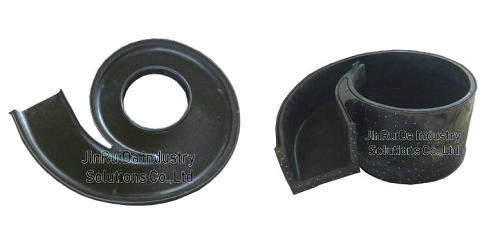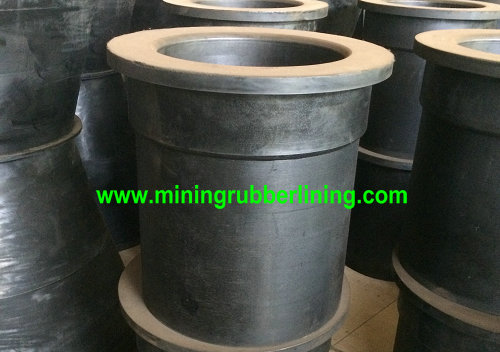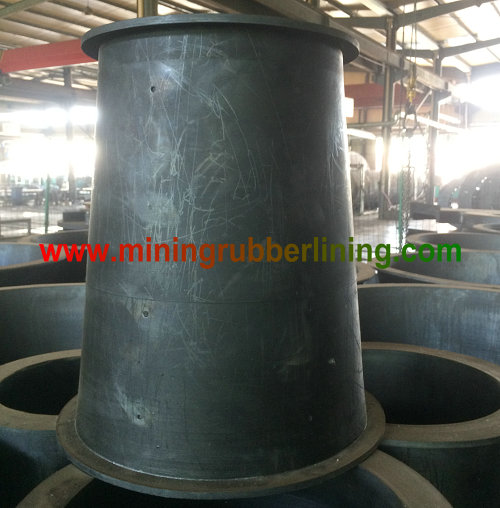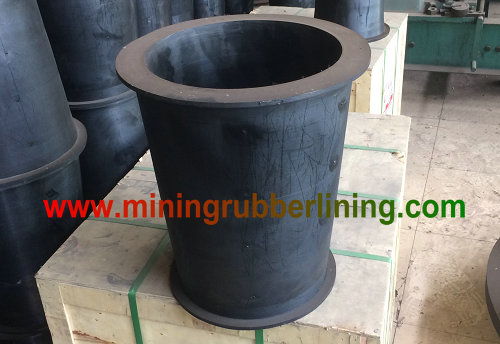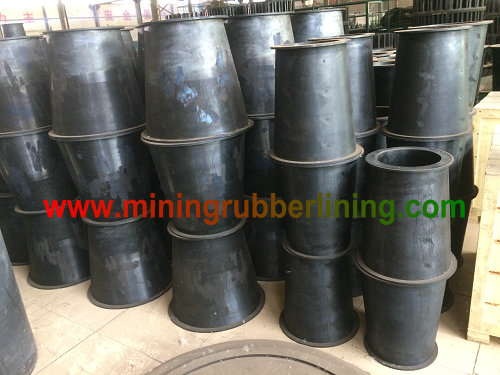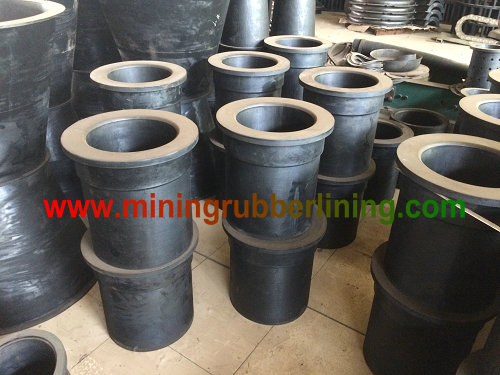Hydrocyclone Vortex Finder , Cyclone Vortex Finder ( Rubber , Polyurethane , PU , Urethane )
Hydrocyclone Vortex Finder From Our Company Can Be Use Wear Resistant Rubber , Polyurethane ( PU , Urethane ) And Silicon Carbide ( SiC) For this Materials.
Feature:
High Wear Resistance: Impact Resistance
High Strength: Good Anti-Abrasion, Effectively Avoid Damage Caused By Water Hammer
High Corrosion Resistance: Fine Anti-Corrosion
Acid Resistance, Alkali Resistance, Corrosion Resistance
Prevent Chemical Damage To Skeleton Frame
Slowing Down Fouling
Adhesion Of Lining Is Very Strong
Less Running Resistance Can Reduce Energy Consumption;: Transmission Medium Resistance Is Very Small
Can Be Transported By a Wide Variety Of Fluid Media
Working Service Life Can Be Above To 5 Years
Energy Saving, Environmental Protection, High Efficiency
High Temperature Resistance: Adapting To Wide Range Of Temperature: Working Temperature: -50℃~+150℃
Main Transport Medium:Wear And Corrosive Medium Slurry Medium
Can Reduces The Impact Abrasion Of The Conveying Medium On The Steel Pipe Skeleton Frame Wall
Light Weight, Easy To Install, Maintain And Transport;
Recycling And Reusing.
Rubber Vortex Finder Vulcanization System
Unsaturated Rubber Vortex Finder
The Following Types Of Vulcanization Systems Are Usually Used.
(1) Sulphur Yellow, Organic Disulfide And Polysulfides, Thiazoles, Metformin, Zinc Oxide And Stearic Acid. Which Is The Most General Vulcanization System. But The Heat-Resistant Oxygen Aging Performance Of The Prepared Vulcanizate Is Not High.
(2) Alkyl Phenolic Resin.
(3) Polyhalides (e.g. Hce For Polybutadiene Rubber, Butadiene Rubber And Nitrile Rubber), Hexachloro-Parylene.
(4) Bifunctional Reagents Such As Quinones, Diamines, Azo And Phenyl Azo Derivatives (For Butyl Rubber And Ethylene Propylene Rubber).
(5) Bismaleimide, Bisacrylate. Acrylate (Methacrylate), Prepolymer Ether Acrylate For Bivalent Metals.
(6) Organic Peroxides For Vulcanizing Saturated Rubber.
Saturated Rubber Vortex Finder
(1) When Curing Epdm, Use Organic Peroxides With Unsaturated Cross-Linking Reagents Such As Triallyl Isocyanurate (Vulcanizing Agent Taic).
(2) Organic Peroxides May Also Be Used When Vulcanizing Silicone Rubber. Vinyl Silicone Rubber Can Be Vulcanized Under The Conditions Of Catalyst (Pt) Participation.
Rubber Vortex Finder Vulcanization Process
It Can Be Divided Into Three Categories According To Vulcanization Conditions: Cold Vulcanization, Room Temperature Vulcanization And Hot Vulcanization.
Cold Vulcanization
Cold Vulcanization Can Be Used For Vulcanization Of Thin Film Products, Which Are Impregnated In Carbon Disulfide Solution Containing 2%~5% Sulfur Chloride, Then Washed And Dried.
Room Temperature Vulcanization
When Vulcanized At Room Temperature, The Vulcanization Process Is Carried Out At Room Temperature And Atmospheric Pressure, Such As Using Room Temperature Vulcanized Paste (Mixed Glue Solution) For Bicycle Inner Tire Joint, Repair, Etc.
Thermal Vulcanization
Thermal Vulcanization Is The Main Method Of Vulcanization Of Rubber Products. According To The Different Curing Medium And Curing Mode, Thermal Vulcanization Can Be Divided Into Three Methods: Direct Vulcanization, Indirect Vulcanization And Mixed Gas Vulcanization.
(1) Sulphurize The Product Directly Into Hot Water Or Steam Medium.
(2) Indirect Vulcanization, Where The Product Is Vulcanized In Hot Air, Is Generally Used In Certain Products With Strict Appearance Requirements, Such As Rubber Shoes.
(3) The Mixture Is Vulcanized By Air And Then By Direct Steam. This Method Can Not Only Overcome The Shortcomings Of Steam Vulcanization Affecting The Appearance Of Products, But Also Overcome The Disadvantages Of Long Curing Time And Easy Aging Due To The Slow Heat Transfer Of Hot Air.
Factors Affecting The Process Of Rubber Vortex Finder Vulcanization
(1) Sulphur Dosage. The Higher The Dosage, The Faster The Vulcanization Rate And The Higher The Degree Of Vulcanization. The Solubility Of Sulfur In Rubber Is Limited, And Excess Sulfur Will Precipitate From The Surface Of Rubber, Commonly Known As "Spray Sulfur ". In Order To Reduce The Sulfur Spray Phenomenon, It Is Required To Add Sulfur At The Lowest Possible Temperature Or At Least Below The Melting Point Of Sulfur. According To The Use Requirements Of Rubber Products, The Amount Of Sulfur In Soft Rubber Is Generally Not More Than 3%, The Amount In Semi-Hard Rubber Is Generally About 20%, And The Amount In Hard Rubber Can Be As High As 40% Or More.
(2) Vulcanization Temperature. If The Temperature Is 10℃ Higher, The Curing Time Is About Half Shorter. Because Rubber Is a Bad Heat Conductor, The Vulcanization Process Of The Product Varies According To The Temperature Of Its Various Parts. In Order To Ensure a More Uniform Degree Of Vulcanization, Thick Rubber Products Are Generally Gradually Heated, Low Temperature And Long Time Vulcanization.
(3) Time Of Vulcanization. This Is An Important Link In The Vulcanization Process. The Time Is Too Short And The Degree Of Vulcanization Is Insufficient (Also Called Under-Sulfur). Time Is Too Long And The Degree Of Vulcanization Is Too High (Commonly Known As Excessive Sulfur). Only The Appropriate Degree Of Vulcanization (Commonly Known As Positive Vulcanization) Can Guarantee The Best Comprehensive Performance.
